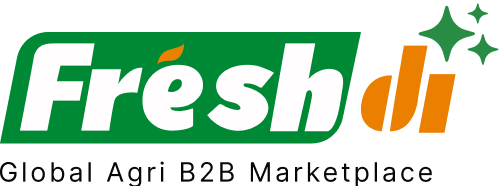Introduction – Global’s Basmati Rice Market in Statistical Focus
Let’s talk numbers: Basmati rice isn’t just a staple in the kitchen—it’s a powerhouse in the global grain economy. In July 2025, Global continues to play a vital role in the worldwide Basmati rice trade, thanks to its strategic export relationships and high-quality production standards. But it’s not just about growing rice—it’s about smart decision-making using solid data.
Global’s share in the Basmati rice export world is backed by robust figures. India and Pakistan, the two Basmati powerhouses, collectively account for over 90% of global production, with India alone contributing around 65%. This dominance makes their exporters key players on the world stage, and choosing the right supplier can make or break your business.
That’s why a data-driven approach is non-negotiable. Leveraging platforms like Freshdi can help buyers tap into real-time RFQ trends, supplier verification, and performance metrics.
Deep Dive – Key Production, Export Statistics & Market Signals
When it comes to Basmati rice, India and Pakistan are the undisputed champions. Here’s a closer look at recent numbers:
- India exported over 5.2 million metric tons of Basmati rice in FY 2023-24, raking in more than $5.4 billion.
- Pakistan isn’t far behind, projecting rice exports worth $3 billion in the same period.
Top Export Destinations
- India ships to: Saudi Arabia, Iran, Iraq, UAE, USA, and Yemen.
- Pakistan exports to: EU, UK, Turkey, Canada, South Africa, Australia, and the US.
Trending Market Signals
- Consumers are shifting their preferences toward premium, organic, and ready-to-cook Basmati rice.
- Organic Basmati rice now makes up over 18% of new product launches.
- Urban areas are seeing a 15% growth in ready-to-cook Basmati rice sales.
Platforms like Freshdi reflect this shift with increasing RFQ (Request for Quote) volumes for organic and flavored Basmati rice variants.
Top 10 Verified Basmati Rice Suppliers in Global – Leading Exporters by Volume
Choosing a supplier isn’t just about price—it’s about trust, consistency, and track record. Based on export volumes, certifications, international presence, and user feedback on Freshdi, here are the Top 10 Basmati Rice Suppliers in Global for July 2025:
- Porcosta, LDA
-
Known for premium organic brown Basmati rice and sustainability focus.
-
A consistent top performer in RFQs and verified export volumes.
-
Offers a wide range of Basmati variants with a strong Middle East clientele.
-
Reliable exporter with certifications and competitive pricing.
-
Serves GCC markets with customized packaging and private labeling.
-
A go-to for bulk orders and consistent delivery timelines.
-
Offers premium “Haji Rice” line, popular in Europe and the USA.
-
Strong presence in African and Middle Eastern markets.
-
Known for competitively priced, high-quality exports.
-
- Emerging player with growing demand across Asia-Pacific.
Dynamic Ranking Note
These rankings are based on July 2025 data. Platforms like Freshdi feature dynamic categories like “Suppliers of the Month” or “Top-Rated Exporters,” offering updated insights depending on recent performance metrics, RFQ fulfillment rates, and buyer reviews.
Market Navigation – Statistical Trends, Price Insights & Export Dynamics
Export Trends & Demand Patterns
India’s Basmati rice exports jumped by 20% YoY in FY 2023-24, hitting 5.2 million metric tons, thanks to the removal of the $950/MT floor price. This move opened doors for aggressive pricing and larger volumes, especially in high-demand regions like the Middle East and Europe.
Meanwhile, Pakistan felt the heat. Their projected exports for 2024-25 were revised down by 11.48%, largely due to India’s re-entry into the competitive pricing arena.
Seasonal Price Fluctuations
Basmati prices don’t stay still. They swing based on:
- Harvest seasons (usually October to December)
- Weather patterns like El Niño
- Government policies, like export restrictions or price floors
- Global demand surges during festive or holiday seasons
In 2024, India’s policy shift caused a drop in export prices, making their rice more attractive but tightening margins for competitors.
Forecast & Market Outlook
According to the USDA, global rice exports are expected to hit 56.3 million metric tons in 2025, the highest ever. But more supply means more competition and lower prices.
India’s Basmati rice industry is projected to grow at a moderated 4% in 2024-25, reaching a revenue mark of ₹70,000 crore. The trend suggests that while volume may continue to rise, per-unit profitability could tighten—making supplier selection even more critical.
Conclusion – Leveraging Data for Informed Procurement
To wrap it up, the Basmati rice export scene in Global is buzzing with action. India and Pakistan dominate the landscape, but policy changes, price wars, and shifting consumer preferences are constantly reshaping the field.
Whether you’re a wholesaler, distributor, or food brand, selecting the right supplier is about more than just rice—it’s about reliability, consistency, and data-backed performance.
That’s where Freshdi becomes your secret weapon. With access to verified suppliers, dynamic RFQ trends, and real-time market intelligence, Freshdi empowers buyers to make smarter, faster, and safer procurement decisions in a market that’s as flavorful as the rice itself.
Key Takeaways
- India and Pakistan account for over 90% of Basmati rice production.
- India’s export volumes surged after removing the $950/MT price floor.
- Premium, organic, and ready-to-cook Basmati variants are in demand.
- Supplier selection should be based on export performance, certifications, and buyer reviews.
- Platforms like Freshdi offer data-driven insights to make informed sourcing decisions.
Checklist for Basmati Rice Buyers
✅ Shortlist suppliers with verified export history
✅ Check Freshdi for real-time RFQ trends and feedback
✅ Favor suppliers offering organic and premium variants
✅ Consider seasonal price trends before bulk purchases
✅ Ensure compliance with destination country import norms
Future Outlook
As we move into 2025 and beyond, expect to see:
- More diversification in export destinations
- Increased digitization of B2B rice trade
- Rising demand for organic and flavored rice
- Stronger focus on traceability and sustainability
By staying informed and leveraging platforms like Freshdi, buyers can stay ahead of the curve and secure the best deals from the world’s top Basmati rice suppliers.
FAQs
Q1: Why is India a leading exporter of Basmati rice?
India’s favorable climate, centuries-old rice varieties, and government support make it the top global supplier.
Q2: What is the impact of the MEP removal on rice prices?
The removal of the Minimum Export Price (MEP) allows suppliers to price more competitively, increasing exports but potentially lowering profit margins.
Q3: How can I verify a Basmati rice supplier’s credibility?
Use platforms like Freshdi to check supplier certifications, export records, and verified buyer reviews.
Q4: What are the most popular Basmati rice variants in 2025?
Organic, ready-to-cook, and flavored Basmati rice are trending globally, especially in urban markets.
Q5: Is it better to source seasonally or year-round?
Sourcing post-harvest (Oct-Dec) often gives better prices, but year-round contracts with reliable suppliers can stabilize costs.
References
- India’s Basmati Rice Exports Surge Post MEP Removal – Reuters
- Pakistan’s Rice Export Forecast 2025 – S&P Global
- Global Rice Export Forecast – LotusRice.vn
- Organic Basmati Market Trends – Global Growth Insights
- Basmati Rice Industry Revenue Forecast – Economic Times India
- Freshdi – Verified B2B Supplier Platform


